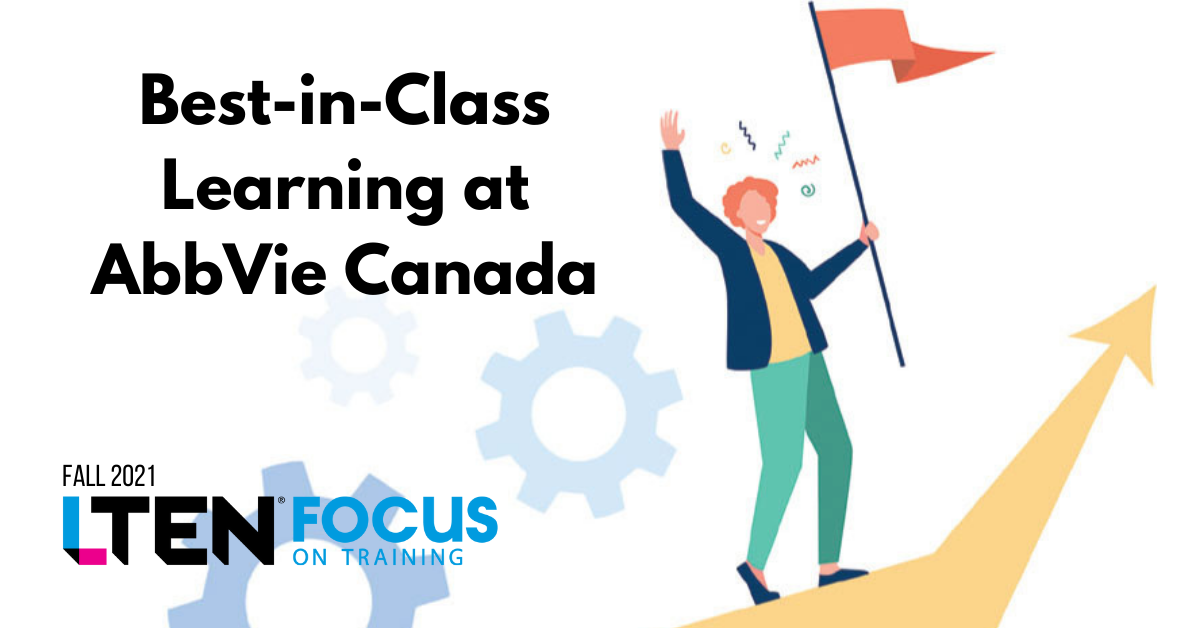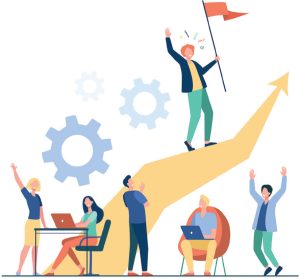
Best-in-Class Learning at AbbVie Canada
GUEST EDITOR – Iain Boomer
Adapting learning plans to focus on innovation was a blank canvas
 In 2020, we saw many learning teams and professionals around the world mobilize quickly and with great agility to support their various teams, stakeholders and businesses. Learning was a massive driving force in helping organizations continue to achieve excellence and create new skills to work in new ways.
In 2020, we saw many learning teams and professionals around the world mobilize quickly and with great agility to support their various teams, stakeholders and businesses. Learning was a massive driving force in helping organizations continue to achieve excellence and create new skills to work in new ways.
It was no different for us at AbbVie either. We had to act quickly to support our organization and be that leader of change and lead with confidence – even though we were ourselves adapting to a new way of working. We were adapting our strategic learning plans to focus on innovating, a blank canvas, not knowing what we were going to paint.
Looking Inward
While leading change for our organization, we took the opportunity in 2020 to focus on ourselves to answer one vital question: How do we ensure that our learning professionals are supported in their development? After all, they are leading change and development for teams. Although chaotic, it’s always the right decision to focus on yourself.
Well-being was a prominent issue since the pandemic had taken over. Too often the learning professional comes last for our own roles and – as we all know too well – must learn by trial and error (diving into the fire headfirst). While we don’t accept that for the stakeholders we support, it’s often how we develop in our roles – learning as we go.
Stepping It Up
We launched a best-in-class learning initiative for AbbVie Canada in 2020. Having a best-in-class learning organization means having effective, strong and leading learning professionals who are true performance consultants. They’re subject matter experts (SMEs) at learning, not subject-matter SMEs, if you follow that. The best way to prepare strong learning professionals for the future is by having a clear, measurable competency model just for us, modeled after our daily environment to grow and develop them within our learning ecosystem.
Reaching All Levels
Many learning organizations around the world are comprised of seasoned learning professionals and top talent from the field. We knew this had to be a guiding principle for our learning organization competency model – supporting eager and strong talent from the field and fueling the hunger to stand out and grow for our seasoned professionals. Simply put, making it relevant for all levels within the learning organization.
We now have a competency model across four performance levels, designed on life sciences training excellence:
- It’s built to include relatable and observable performance levels that enable self-evaluation and support development.
- It’s also designed to define the baseline level of performance required to meet the organization’s expectations – rather than defining performance below expectations.
- Behaviors for each competency are cumulative across performance levels – in other words, not all behaviors are displayed at each performance level.
But Wait, There’s More
We didn’t stop there – we hadn’t spent enough time developing ourselves yet. We moved the project into creating experience maps, which:
- Showed the learning partner and the organization what is required and what “good” looks like to achieve the next performance level.
- Made the minimum expectations for the role transparent.
- Illustrated experiences Learning Canada team members could have at the various levels of the Learning Partner role.
- Reflected the behaviors outlined in the learning partner competency model, a guide to aid discussions around a learning partner’s potential career journey.
- Provided inspiration for development experiences that can address competency gaps or capitalize on strengths.
From experience maps, we moved over to learning pathways, the discrete actions that, when learned, allow a learner to fully exhibit a behavioral objective. We used the competency model behaviors required of the learning partner role level as a starting point for defining the level’s behavioral objectives.
The learning pathway is designed to help learners of varying degrees of experience achieve a desired proficiency level across competencies. For example, the pathway will include training activities designed to help new learning partners operating at a “novice” level in instructional design progress to the expected “advanced” level. This paves a clear and tailored onboarding journey for learning partners.
We rounded this up with a leadership guide to ensure that this initiative is passed down through succession and ensures consistency.
Conclusion
A very important by-product occurred during this project and initiative: Great learning minds came together. We shared experiences, we laughed at relatable stories and supported each other during agreed struggles.
We had fun. We enjoyed coming together as learning professionals within AbbVie, Allergan and BCB. We disagreed, and agreed, and that promoted innovation because we all had a common purpose – evolve the state of learning.
This all achieved positive mental health and well-being for us as learning professionals. This is exactly what we get from our events and experiences with LTEN!
Iain Boomer is head of learning and development for AbbVie Canada. Email Iain at
iain.boomer@abbvie.com.








